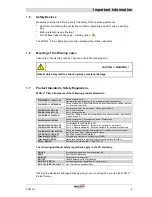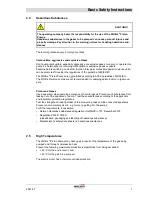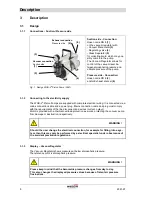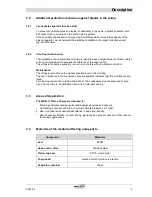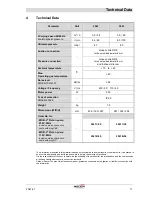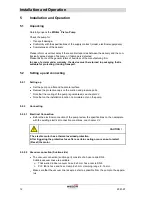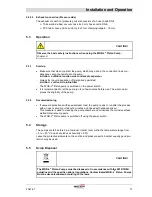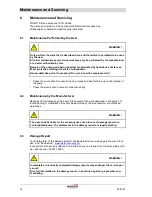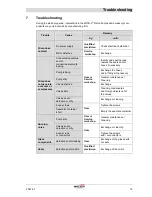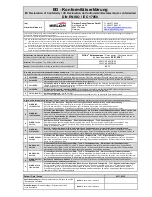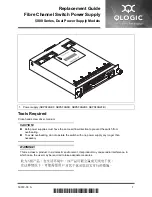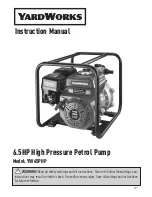
Basic Safety Instructions
6
2561-67
2
Basic Safety Instructions
2.1
General Information
Warning notices must be observed. Disregarding them may lead to damage to health and
property.
The WOB-L
®
Piston Pumps must be operated by personnel who can detect impending dan-
gers and take action to prevent them from materialising.
The manufacturer or authorized workshops will only service or maintain the WOB-L
®
Piston
Pumps if it is accompanied by a fully completed damage report. Precise information about
the contamination (also negative information if necessary) and thorough cleaning of the
WOB-L
®
Piston Pumps are legally binding parts of the contract.
Contaminated WOB-L
®
Piston Pumps and their individual parts must be disposed of in ac-cordance with the legal
regulations.
The local regulations apply in foreign countries.
2.2
Electricity
The WOB-L
®
Piston Pumps of operation mode S1 are supplied. When the location of opera-
tion mode S1 devices is changed, please note that the testing must be repeated in accor-
dance with DIN EN 0105, DIN EN 0702 and BGV A2.
The local regulations apply in foreign countries.
Please note the following when connecting to the electrical power supply system:
The electrical power supply system must have a protective connector according to DIN
VDE 0100-410 (IEC 60364-4-41).
The protective connector must not have any breaks.
The connecting cable must not be damaged.
2.3
Mechanical Systems
Improper use can lead to injuries or material damage. Observe the following instructions:
Only operate the pumps with hoses of the specified dimensions.
The maximum permissible pressure of 1 bar at the suction connection must not be ex-
ceeded.
Hazardous substances must be separated out as far as this is technically possible before
they reach the pump.
External mechanical stresses and vibrations must not be transmitted to the pump. Only
use flexible laboratory hoses for connecting pumps.
The overpressure generated at the pressure port must not exceed 1 bar.
The pump must not be used to suck up fluids. Lay the exhaust pipe so that it slopes
downwards, so allowing condensate to flow out of the pump. Collect the condensate and
dispose of it in an environmentally compatible manner.
Prevent dyes exuding.
Maintain a space of least 20 mm between the pump and adjacent parts in order to enable
the pump to cool.
CAUTION !
Solid particles in the pumping medium impair the pumping action and can lead to
damage. Prevent solid particles penetrating into the pump.





